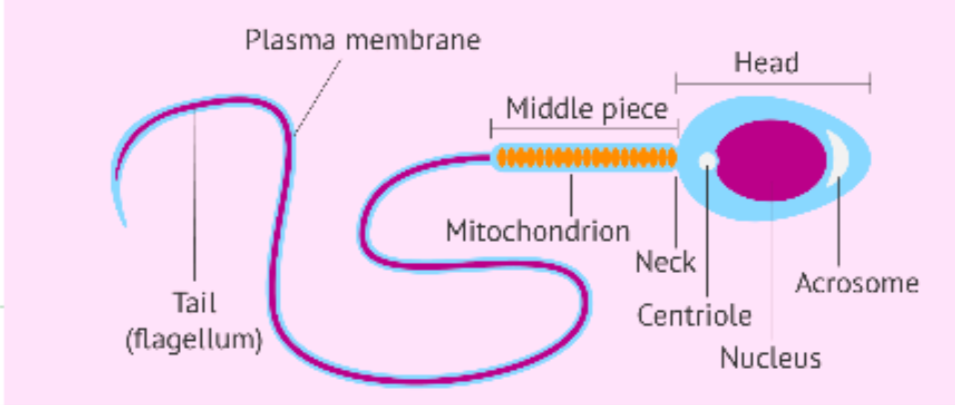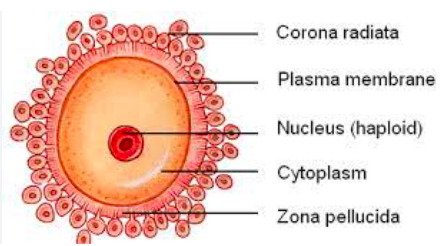UO6 and UO7
Stimuli
A stimulus is a %%physical or chemical change%% that takes place %%outside or inside the body%% and %%triggers a response%% in it
Receptors
%%Internal receptors%% perceive changes %%inside the body%% and are spread all over the body
%%External receptors%% perceive stimuli in the %%external environment%% and can be:
- %%Thermocereptors%% perceive %%changes in temperature%%
- %%Chemoreceptors%% detect %%chemical substances%%
- %%Nociceptors%% %%perceive pain%%
- %%Photoreceptors%% are %%light-sensitive%%
Senses and their receptors
Smell
%%Olfactory cells%% are %%chemoreceptors%% that are %%sensitive%% to volatile %%substances%% in the air
Touch
%%Thermoreceptors%% (heat and cold); %%mechanoreceptors%% (contact and pressure); and %%nociceptors%% (pain)
Taste
%%Gustatory cells%% are %%chemoreceptors%% sensitive to chemical substances from food dissolved in saliva
Hearing
%%Mechanoreceptors%% called %%auditory cells%% are sensitive to %%vibrations%% and %%balance cells%% are sensitive to %%movement%%
Sight
%%Photoreceptors%% are sensitive to variations in light intensity and %%enable us to see%%
CNS (Central Nervous System)
The CNS %%coordinates all the body’s functions%%. It’s formed by the %%encephalon%% and the %%spinal cord%%
The encephalon is %%protected by the skull%% (or cranium) and by %%three membranes%% called the %%meninges%%, between which %%cerebrospinal fluid%% circulates. The three layers are:
- Pia mater
- Arachnoid
- Dura mater
The encephalon is divided into three parts:
- The %%brain%% is divided into %%two hemispheres%%, which are separated by a fissure. Its surface, called the cerebral cortex, is rough and full of folds known as circumvoltions.
- The %%cerebellum%% %%controls balance%% and %%voluntary movements%% such as walking
- The %%brainstem%% %%links%% the encephalon to the spinal cord and %%controls involuntary functions%%
- The %%medulla oblongata%% controls our %%breathing and heart rate%%
The %%spinal cord%% is a long thin %%bundle of nerves%% %%protected by the spine%%, and %%links%% the encephalon to the rest of the body.
- It %%serves as a conduit%% for nerve impulses from the receptors to the encephalon and from the encephalon to the effectors
- It also %%coordinates simple responses%% called %%reflex actions%%
PNS (Peripheral Nervous System)
The PNS %%links the CNS to the body’s organs%%
It’s formed by %%31 pairs of nerves%% which stem from the spinal cord (%%spinal nerves%%) and %%12 nerves%% which originate from the encephalon (%%cranial nerves%%)
Nerves are divided into:
- %%Sensory nerves%% carry %%information from the receptors to the CNS%%
- %%Motor nerves%% convey %%orders from the CNS to the effectors%%
The %%somatic PNS%% consists of the %%sensory nerves%% and %%motor nerves%%. It %%controls voluntary movements%%
The %%autonomic PNS%% consists of %%motor neurons%% which regulate the %%activity of the internal organs%% and %%controls involuntary movements%%. It’s divided in two parts:
- The %%sympathetic nervous system%% %%reacts%% to feelings like stress and fear
- The %%parasympathetic NS%% causes the body to %%relax%%
Involuntary actions
- Reflex actions are %%fast, involuntary automatic responses%% that are %%controlled by the spinal cord%%
- Reflex arc involves a %%receptor, sensory nerve, interneuron, motor nerve and effector organ%%
Endocrine system
The endocrine system consists of various glands that produce hormones
Pituitary gland
The pituitary gland produces:
- %%Growth hormone%% (GH), which %%stimulates%% the %%growth of muscles and bones%%
- %%Antidiuretic hormone%% (ADH), which %%regulates%% the %%amount of water in the urine%%
- %%Gonadotropins%% (%%FSH%% and %%LH%%), which %%stimulates activity in the gonads%%
- %%Thyroid-stimulating hormone%% (TSH) %%stimulates activity in the thyroid%%
- %%Oxytocin%% %%induces contractions%% of the uterus during labour
- %%Prolactin%% %%stimulates milk secretion%% in the breasts
Thyroid
- %%Thyroxine%%, which %%activates cell metabolism%% and %%influences growth and development%%
Parathyroid
- %%Prolactin%%, which %%regulates%% the %%amount of calcium and phosphate%% in the blood
Adrenal glands
The adrenal glands produce:
- %%Adrenaline%%, which %%prepares the body%% for a dangerous situation or for %%action%%
- %%Cortisol%%, which %%regulates carbohydrate metabolism%%
Pancreas
The pancreas produces:
- %%Insuline%%, which %%decreases%% the amount of %%glucose in the blood%%
- %%Glucagon%%, which %%increases%% the amount of %%glucose in the blood%%
Ovaries
- %%Oestrogen and progesterone%%, which %%control%% the development of %%secondary sex characteristics%%, %%regulate the menstrual cycle%% and ovulation, and %%prepare%% the body for a %%pregnancy%%
Testicles
- %%Testosterone%%, which %%controls%% the %%development of secondary sex characteristics%% and %%regulates the production of sperm%%
Hormones
Hormones are a regulatory %%substance%% that %%stimulate%% specific cells or tissues %%into action%%
Skeletal system
The skeletal system is formed by %%bones and joints%%. Its functions are:
- %%Internal framework%% for our bodies
- %%Protect%% organ and internal tissues
- %%Support%% for muscles
- %%Manufacture blood cells%%
- %%Storage of calcium and phosphorous%%
Muscular system
%%Antagonistic pairs of muscles%% work when one of the muscles is %%contracted%% and the other one is %%relaxed%%
Sex, sexuality and gender
- Sex refers to the %%different characteristics of males and females%%, such as reproductive organs, chromosomes, hormones, etc
- Sexuality is a person’s identity in relation to the gender to which they are typically attracted to (%%sexual orientation)%%
- Gender refers to the %%socially constructed%% %%characteristics of women and men%%
Adolescence
- Adolescence is a stage that lasts more or less from the age of %%11 to 18%%
- It starts with %%puberty%%, which marks the %%beginning of an individual’s reproductive capacity%%
- There are some changes, which are due to the secretion of %%sex hormones%% into the bloodstream
- The %%reproductive organs develop%% and become %%fully functional%%
- For girls this is %%menstruation%%
- For boys it’s the %%first ejaculation%%
- %%Secondary sex characteristics%% develop:
- Girls: sex organs grow, breasts develop, hips become wider, waist becomes thinner and hair grows in pubic area and underarms
- Boys: penis and testes grow larger, shoulders become broader, muscle mass is gained, voice drops, hair grows in pubic area, underarms, face and chest
- %%Sexual attraction%% is also developed
Male reproductive system
It’s made up of the testes, the epididymis, the vasa deferentia, the accessory glands and the penis:
The %%testes%% are two %%glands%% situated %%inside the scrotum%%. They are filled with tiny tubes called seminiferous tubules and produce both %%testosterone and spermatozoa%%
The %%epididymis%% %%stores spermatozoa%% whilst they mature and become fertile
The %%vasa deferentia%% %%connects the epididymis to the urethra%%, which leads to the outside of the body
The accesory glands %%secrete substances%% that joined with spermatozoa will produce semen. They are:
- The %%seminal vesicles%%, which %%produce substances%% that are an %%energy source for spermatozoa%%
- The %%prostate gland%% %%secretes substances%% that %%activate the mobility of the spermatozoa%%
- %%Cowper’s gland%%, which %%produces a lubricating secretion%% that %%neutralises acidity%% in the urethra and vagina
The %%penis%%’ function is to %%deposit the spermatozoa in the female reproductive system%%. Its head is protected by a fold of skin called the %%foreskin%%

Female reproductive system
It’s made up of the ovaries, the genital tracts and the external genitalia:
The %%ovaries%% are a pair of %%glands%% located at the %%bottom of the abdominal cavity%% on either side of the uterus. They %%produce ova and female sex hormones%%
The genital tracts are:
- The %%fallopian tubes%%, two tubes that %%connect the ovaries to the uterus%%. Here is where %%fertilization takes place%%
- The %%uterus%% is a %%hollow, muscular organ%% where the %%embryo develops%%. The lower part (%%cervix%%) %%connects with the vagina%%
- The %%vagina%% is an %%elastic tube%% which %%connects the uterus to the outside of the body%%. Here is where %%spermatozoa are deposited%%
The external genitalia (%%vulva%%), is formed by the labia, folds of skin and the clitoris

Formation of spermatozoa and ova
The formation of spermatozoa is called %%spermatogenesis%% and takes place in the %%seminiferous tubules%%, inside the testes
The formation of ova is called %%oogenesis%%, it takes place in the %%ovaries%% and has two stages:
- Stage one: Females develop immature ova when they are embryos. These ova %%start developing%% when the female %%reaches puberty%%
- Stage two: After the onset of puberty, it’s a %%cycle that repeats%% every 28 days approximately.
Ovarian and uterine cycle
The ovarian cycle lasts %%28 days%% approximately and is divided into two stages:
- The %%follicle grows for 14 days%%. When ovulation occurs, the follicle breaks and %%releases ova%% into the %%fallopian tubes%%
- Formation of the corpus luteum, where the follicle becomes a %%mass of cells%%. If fertilisation doesn’t happen, it %%disintegrates%%
The uterine cycle is the %%thickening of the internal wall%% of the uterus (the %%endometrium%%) as the ovum matures in the ovary. It also lasts approximately %%28 days%% and has three phases:
- %%Menstruation%% sets the beginning of the cycle. The thick %%endometrium is shed%% and expelled through the vagina along with blood
- The endometrium’s lining %%regrows%%
- The endometrium %%thickens again%% so that if the ovum is fertilised, the embryo has somewhere to develop
Hormones that regulate the ovarian and uterine cycles:
- %%FSH%% and %%LH%% are secreted by the pituitary gland. They %%stimulate growth of the follicle%% and %%trigger ovulation%%
- After ovulation, the %%corpus luteum%% secretes %%oestrogen%% and %%progesterone%% which cause the %%endometrium to thicken%%
- If fertilisation doesn’t take place, the %%corpus luteum disintegrates%% and %%stops secreting hormones%%. As a result, the endometrium is expelled and %%menstruation occurs%%. The cycle then starts again
Fertlisation and embryonic development
It lasts approximately %%nine months%% (40 weeks)
Fertilisation is the process in which two %%gametes join together%% and create a new cell, the %%zygote%%
The zygote first %%divides%% whilst it travels to the uterus. The zygote turns into an %%embryo%% as it divides
%%Implantation%% happens when the embryo %%arrives in the uterus%% and %%embeds in the endometrium%%
After implantation, the placenta and amniotic sac develop
- The %%placenta%% is an organ that %%links the embryo to the mother%% through the %%umbilical cord%% to exchange nutrients, oxygen and waste
- The %%amniotic sac%% is filled with %%amniotic fluid%% where the %%embryo develops%%
During the %%first trimester%%, the %%majority of the organs have formed%% but not developed. The zygote becomes a %%foetus%%
During the %%second trimester%%, the foetus’ %%skeleton ossifies%% and it %%starts moving%%. It %%begins to hear%% around 18 weeks
During the %%third trimester%%, the foetus grows and the %%organs finish developing%%. Hair grows and the lungs are completely functional
After 40 weeks of gestation, the mother’s pituitary gland releases %%oxytocin%%. It causes %%contractions in the uterus%%, which is the start of labour, and also %%stimulates milk secretion%%. Labour has three phases:
- %%Dilation%% of the walls of the uterus
- %%Expulsion of the foetus%% by involuntary contractions of the uterus
- %%Afterbirth%%, %%expulsion of the placenta%% and fetal membranes
Sterility
- %%Sterility%% is the %%inability to have children%%
- It affects both men and women and may be caused by a number of factors
- Assisted reproduction are different %%artificial techniques used to facilitate fertilisation%%. The most common are:
- %%Artificial fertilisation%% is when the %%sperm is washed and injected into the uterus%%, where it fertilises the egg naturally
- %%In vitro fertilisation%%, when specialists %%harvest and fertilise the eggs in a lab%%
Contraception methods
- %%Barrier methods%% %%prevent semen from entering the uterus%%. The %%condom and diaphragm%% are the most common. Plus, condoms avoid STIs
- %%Hormonal or chemical methods%% are %%drugs that prevent ovulation or kill spermatozoa%%. Birth-control pills and spermicides
- %%Surgical methods%% are %%sterilisation techniques%%
- In women it’s called %%tubal ligation%%, when the %%fallopian tubes are cut%% and tied
- In men, it’s called %%vasectomy%%, when the %%vasa deferentia is cut%%